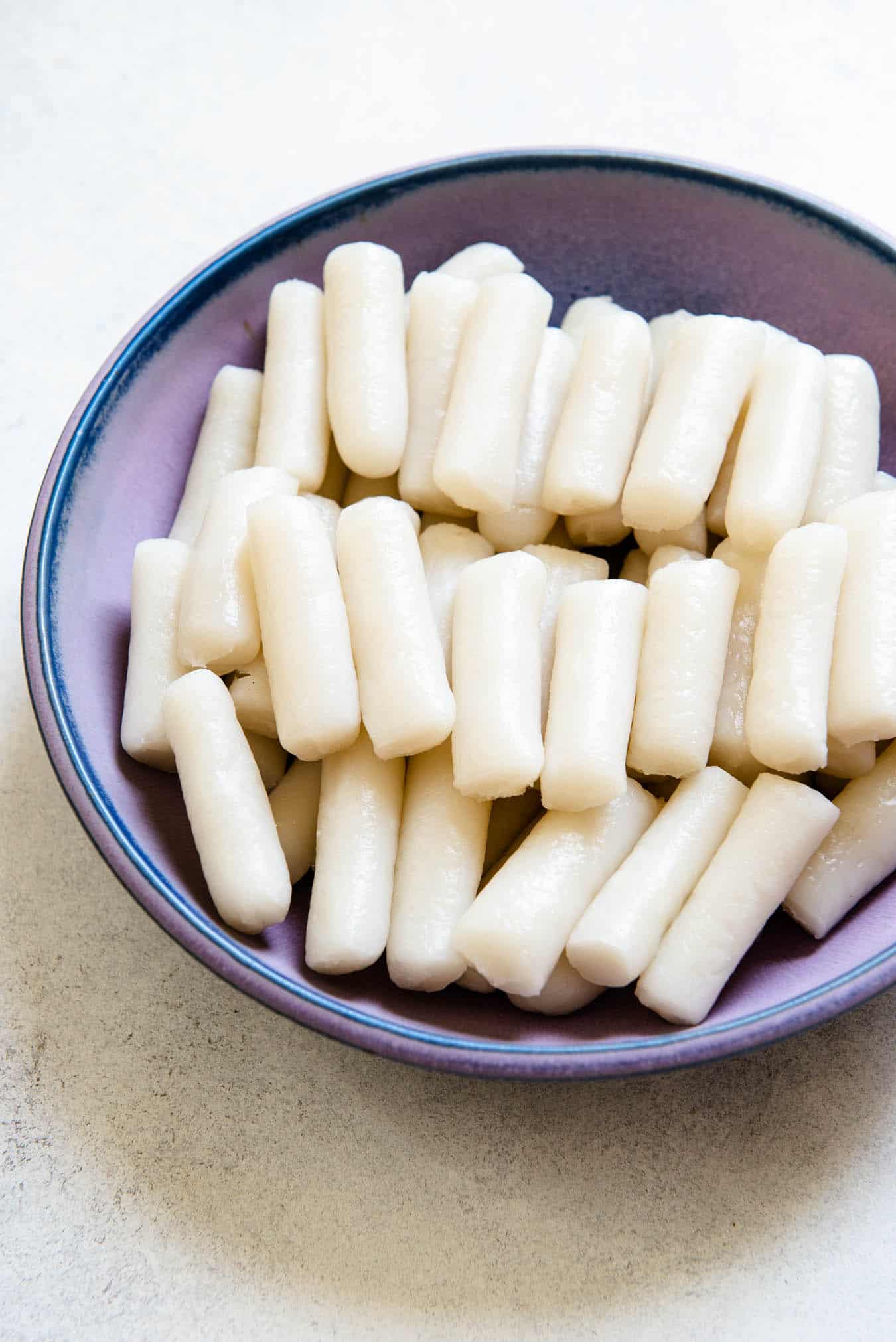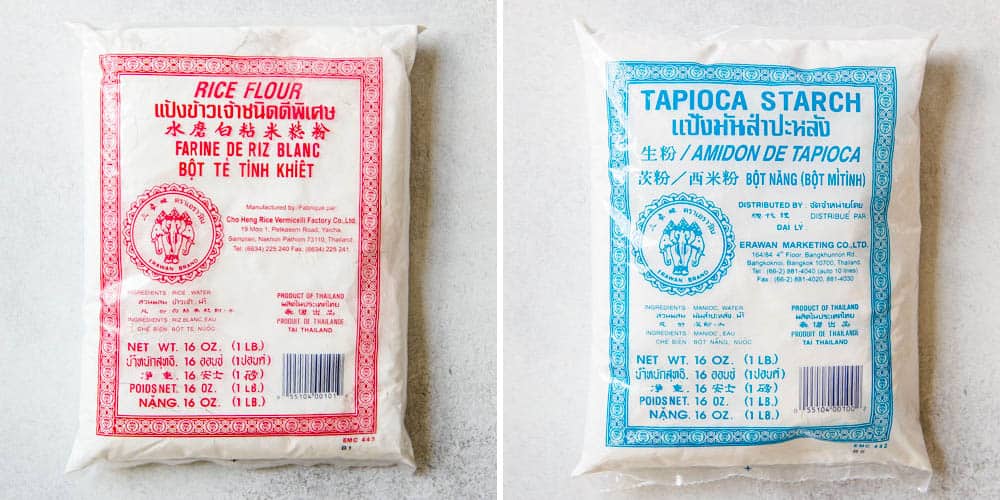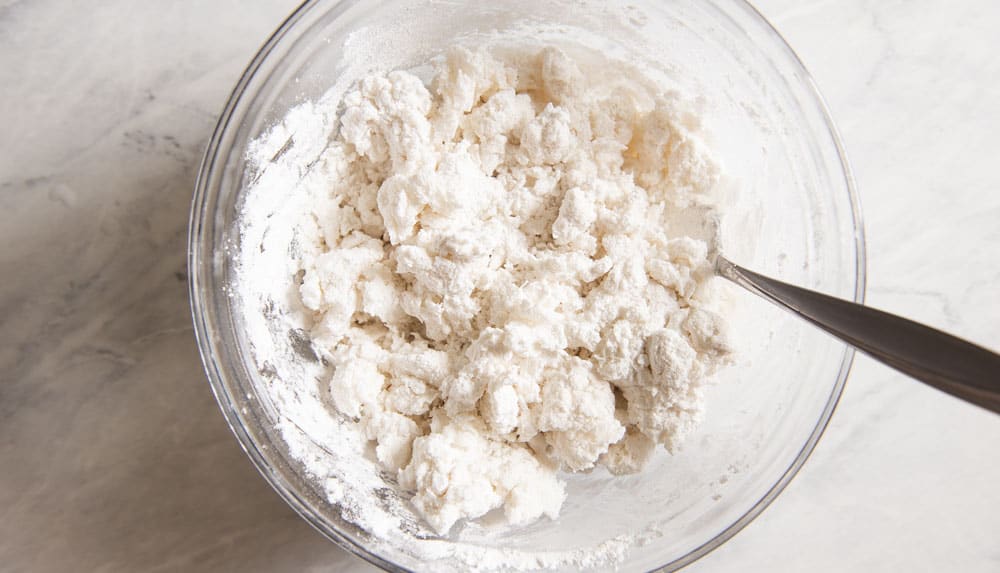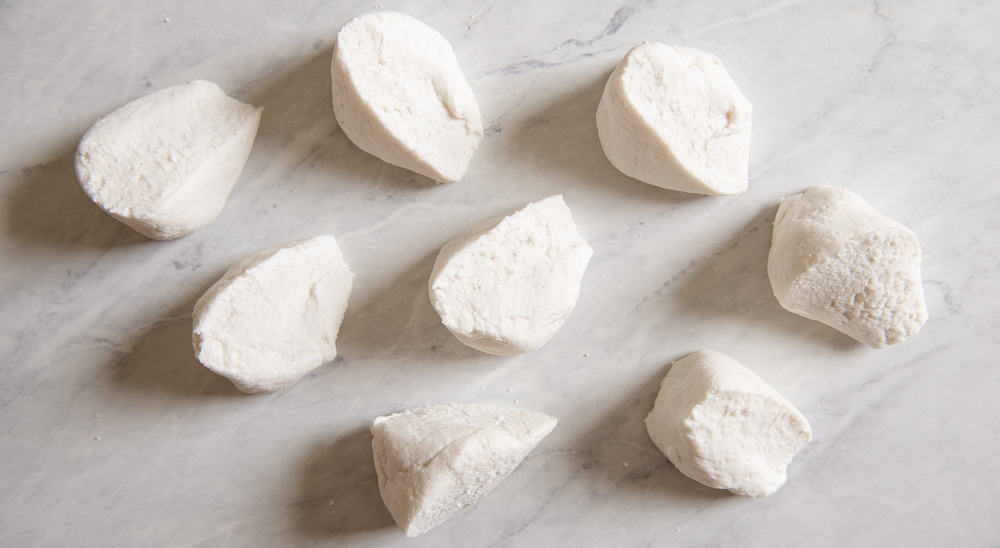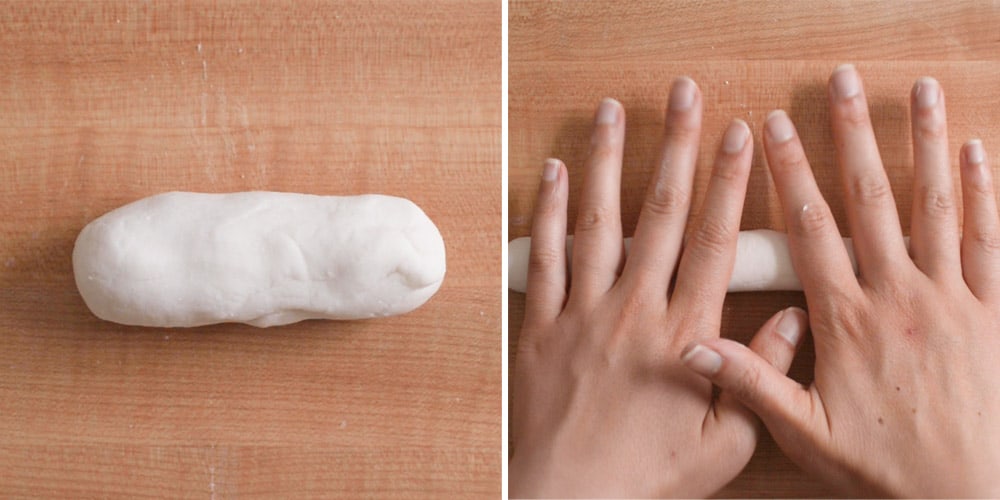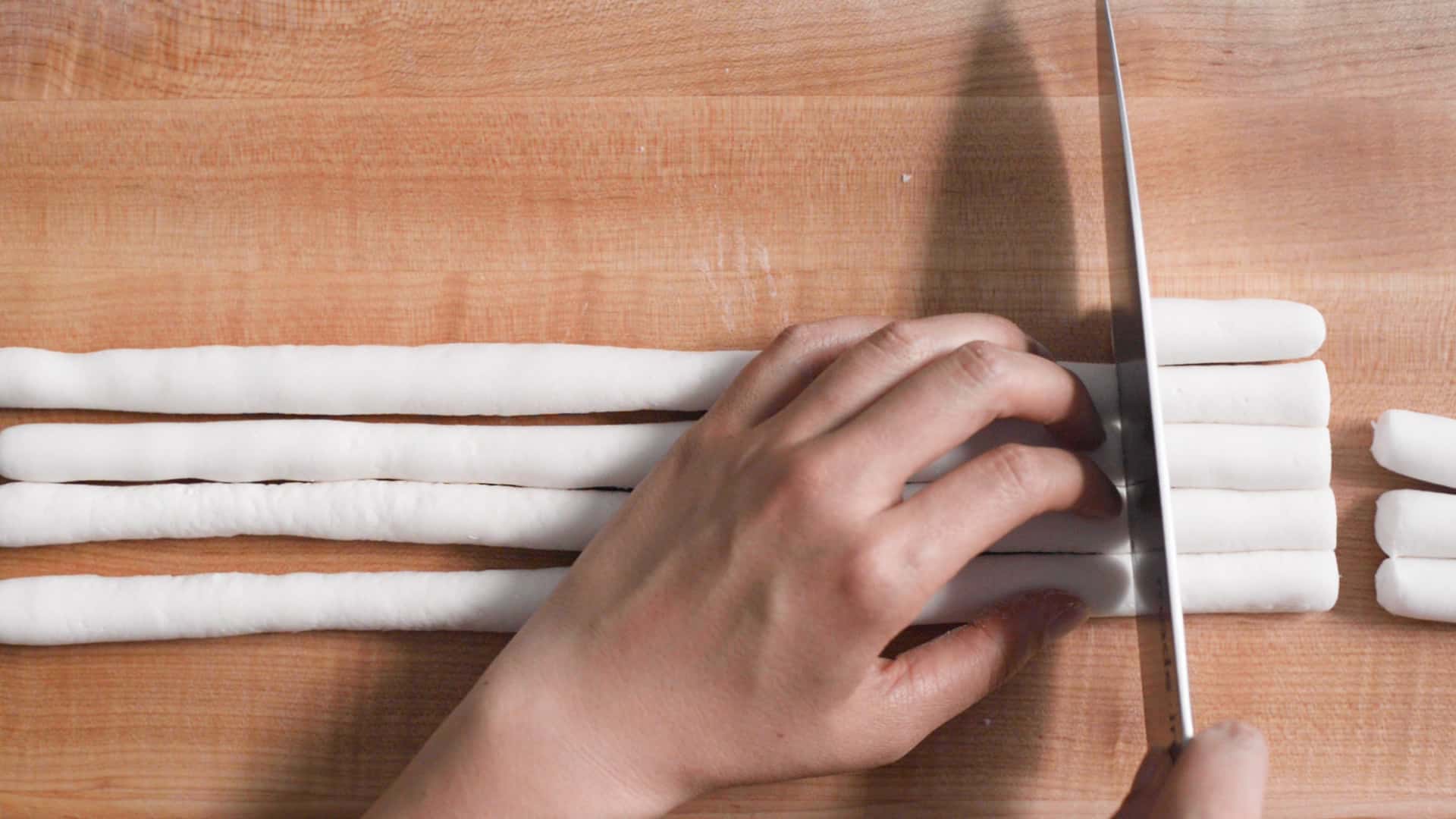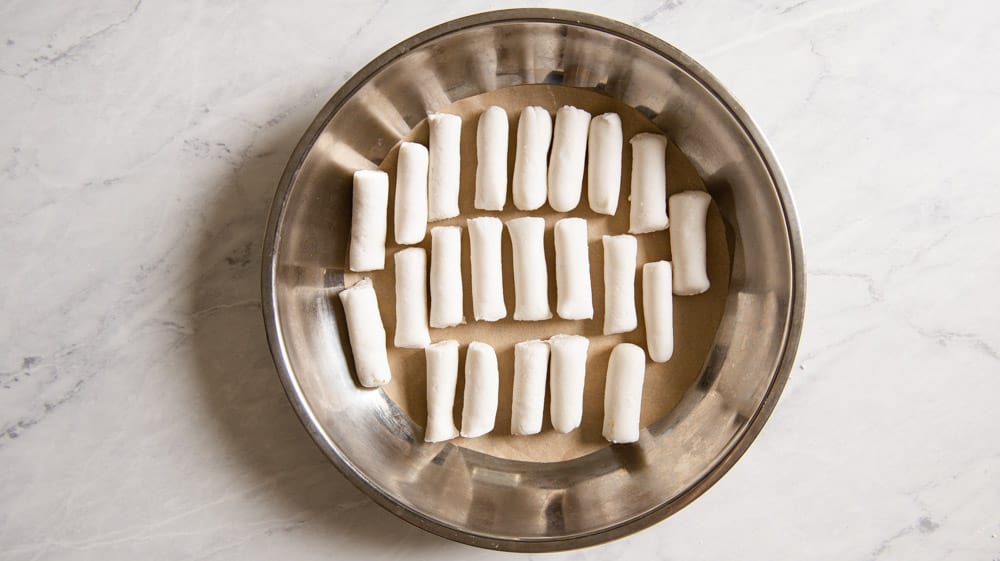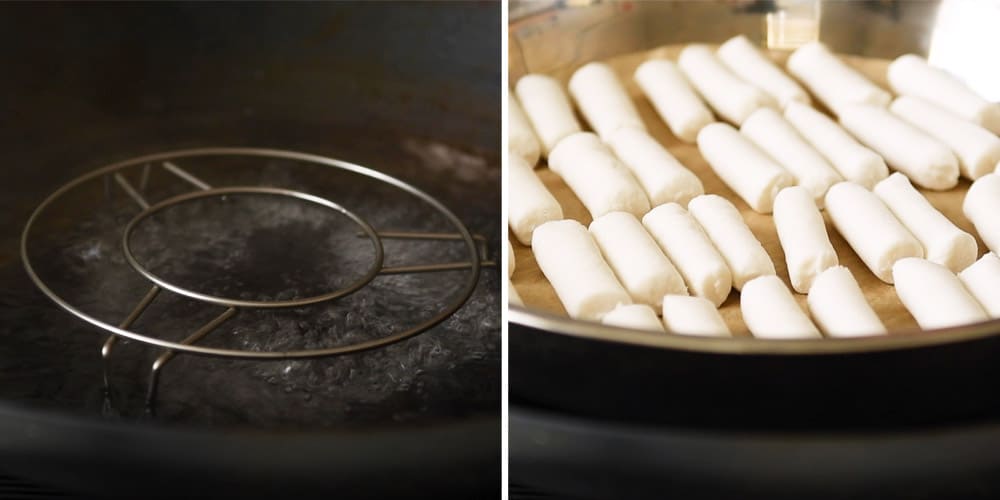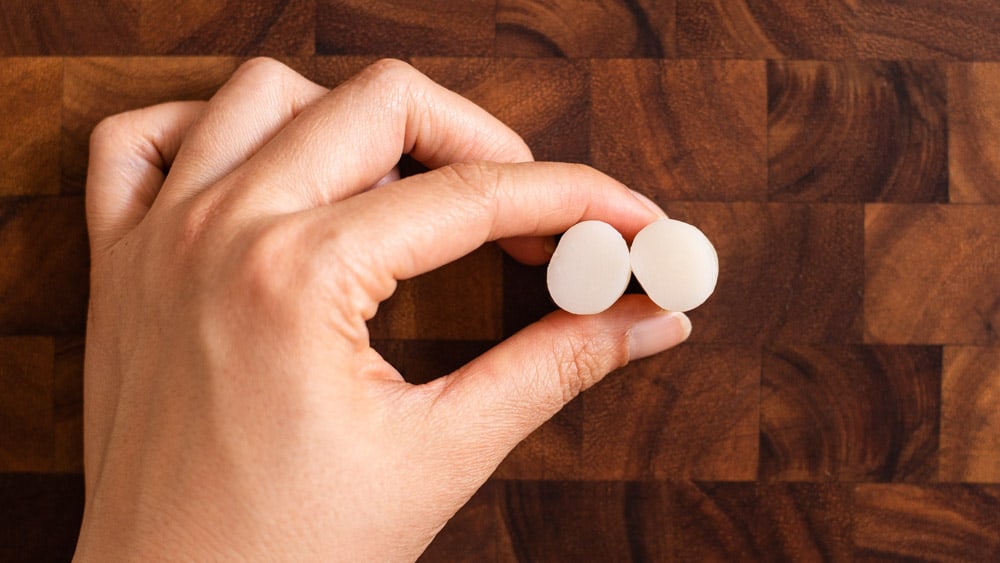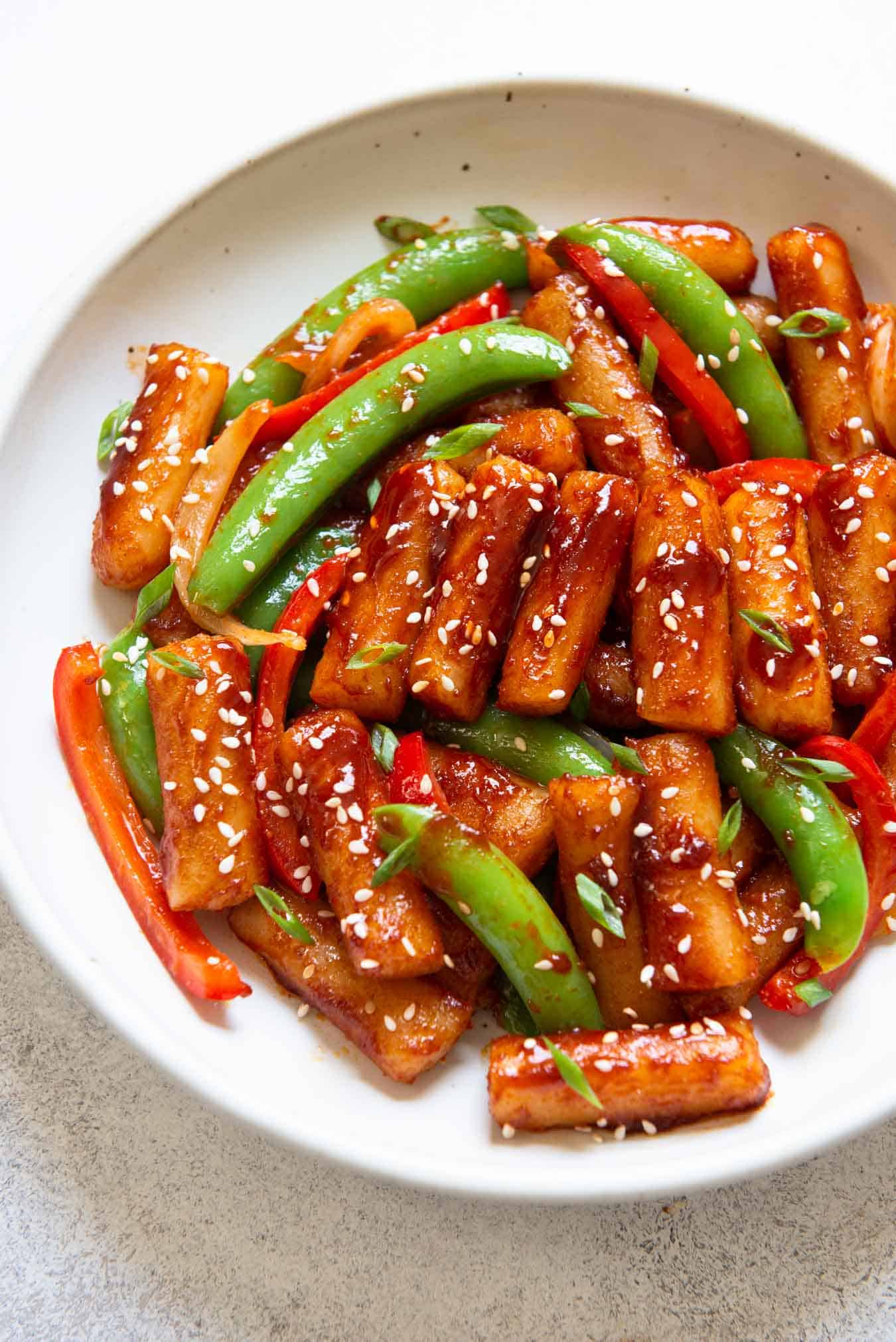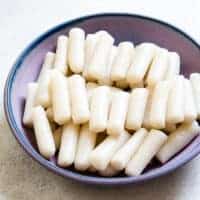Often times, tteok is made by pounding a rice flour dough to give the rice cakes its characteristic chewy texture. Although the shape of the rice cakes you see here looks a lot like garaetteok (cylindrical rice cakes), it is not derived from the traditional method of making tteok. That’s why I hesitate to call this a tteok or garaetteok recipe because it is my mom’s interpretation of a Korean-style rice cake. However, if you are interested in learning how to make tteok from scratch, check out this recipe from Maangchi. These steamed Asian rice cakes are a versatile ingredient that you can use to stir fry or stews.
HOW TO MAKE STEAMED ASIAN RICE CAKES
FLOUR BLEND
The rice cakes are made from a combination of rice flour and tapioca starch. The tapioca starch gives the rice cakes a chewier quality. If you only used rice flour, the rice cakes will be firmer and denser when you bite into them. In the recipe, I also add a small amount of sugar and salt to the dough to give the rice cakes a little flavor.
USING HOT WATER TO MAKE THE DOUGH
To start making the dough, you’ll mix the flours with boiling hot water. It is crucial to use hot water because the heat “cooks” the dough, making it flexible and pliable. In turn, this allows you to manipulate the dough into whatever shape you want. When adding water to the flour, I usually pour about half the water into the bowl with one hand, and use the other hand to stir everything simultaneously. Once all the water has absorbed, I’ll add the rest of the hot water. Stir the water and flour together for 30 seconds to 1 minute. If the dough is looking very dry, pour room temperature water over any loose flour on the bottom of the bowl, 1 to 2 tablespoons at a time.
KNEADING THE DOUGH
As you can imagine, the dough is very hot in the beginning. I usually let the dough cool for 2 to 3 minutes before kneading, stirring it frequently to release some steam from the dough. If you still find the dough to be very hot, stir the dough for for another 1 to 2 minutes before kneading. Knead the dough until you have nearly worked all the loose flour into the clump of dough. Then, turn the dough onto a work surface. Continue kneading it for about 2 to 3 minutes. The outside of the dough should be relatively smooth (see photo below). This dough is very forgiving, so it doesn’t matter if you have a few creases here or there. Most importantly, the dough should not feel dry. It is very common for rice flour doughs made with hot water to be a little sticky when you knead it, especially in the beginning. As you continue to knead it, the dough will gradually feel less sticky. Towards the end of kneading, I found the dough to be a little tacky but not overly sticky. If the dough still feels very sticky after several minutes of kneading, add another tablespoon of rice flour and knead the dough again.
DIVIDE DOUGH AND SHAPE INTO LONG ROPES
This type of dough does not need any resting time. As a matter of fact, it’s better to work with it while the dough is still warm. If you let the dough sit for a long time, the outside of the dough will start to dry and form a crust. Shape the dough into a ball and divide it into 8 equal pieces. You don’t need to be too precise. For reference, my pieces of dough were somewhere between 95 to 100 grams. Leave one piece of dough on the work surface for rolling out. Transfer the remaining 7 pieces of dough back into the bowl and cover with a towel. Shape the piece of dough into a short, thick log, and then place the log on the work surface. Starting from the middle, roll out the dough and gradually work your hands further apart. Eventually, you will get a long dough rope. It should be about 16 inches long and just over 1/2 inch in diameter. Roll the dough rope off to the side. Roll out 3 more pieces of dough into long ropes. Then, line up the 4 ropes of dough and cut them up into 2-inch pieces. The dough will stick to your knife a little. You can lightly grease the sides of your knife with oil to prevent sticking, but I don’t usually bother with that. Transfer all the pieces of rice cake onto a large baking sheet and cover them with a towel while you finish shaping and cutting the remaining pieces of dough. If any of the last few pieces of dough have started to dry up and crust over, knead them again until they no longer feel dry. Then, roll out the dough into a rope.
EQUIPMENT TO STEAM ASIAN RICE CAKES
2 large plates or small pansparchment papersteaming racklarge wok with lid
ALTERNATIVE STEAMING SETUP
You’ll want a wok that is large enough to comfortably fit the plates or pans holding the rice cakes. If you don’t have a large wok, you can also use a large sauté pan with deep sides. I would also recommend using a shorter steaming rack. Many sauté pan lids tend to be made of glass. Condensation develops easily on glass lids. Sometimes, the water might drip onto the rice cakes while they are cooking. To prevent that from happening, you can tie a towel to cover the bottom of the lid to catch the condensation. You can also steam the cakes in bamboo baskets.
STEAM THE ASIAN RICE CAKES
Line 2 plates (or small pans) with parchment paper to keep the rice cakes from sticking to the plates. Arrange the pieces of dough into rows on the parchment-lined plates. Keep the rice cakes covered with a dry cloth until they’re ready to be steamed. Fill the wok with about 1 1/2 to 2 inches of water. Bring the water to boil. Then, carefully place the steaming rack in the center of the wok. Make sure that the water isn’t covering the rack completely. If that is the case, remove some water from the wok. Place one of the plates or pans of rice cakes onto the steaming rack. Finally, cover the wok with a lid and steam the rice cakes on high heat for 10 to 11 minutes. To check to see if the rice cakes are fully cooked, slice up a rice cake and check the center. The rice cakes are fully cooked if you don’t see any solid white spots in the center. Let the rice cakes cool on the counter while you steam the second batch of rice cakes. If the water level in the wok is looking low, add some water to the wok.
HOW TO STORE ASIAN RICE CAKES
Store the Asian rice cakes in a tupperware for up to a week. My preferred method to reheating rice cakes is to soak them in hot water for 2 minutes. I boil some water in a saucepan before turning off the heat. Then, I carefully lower the rice cakes into the hot water. You can also freeze the rice in a freezer bag and they will keep for months. Reheat the rice cakes by soaking them in hot water for 5 minutes.
HOW TO EAT ASIAN RICE CAKES
You can serve the rice cakes warm with sauces like my soy and vinegar dumpling sauce, chili oil, or peanut sauce. You can also stir fry the rice cakes (like in the photo above), add them to stews, or use them to make tteokbokki.
